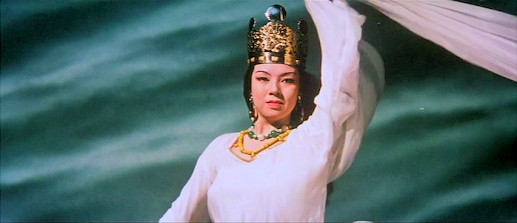The Ladder of Success / 夜の素顔 / Yoru no sagao (‘The True Face of the Night’, 1958)
Obscure Japanese Film #170
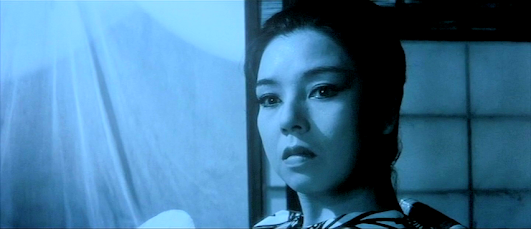 Machiko Kyo in the moonlight scene
Machiko Kyo in the moonlight scene1944. Akemi (Machiko Kyo) is a traditional dancer entertaining thetroops at a military base in the south of Japan. When an air raid interruptsthe performance, she’s escorted to safety by Wakabayashi, a navy pilot (JunNegami) with whom she ends up having a fling. Three years later, made homelessby the war, Akemi arrives in Tokyo having travelled therein the hope of becoming a disciple to famed dance teacher Shino (ChikakoHosokawa). When her request is denied, she breaks down in tears before leaving,but Shino’s patron, Inokura (Eijiro Yanagi), who was listening in the room next door, feels sympathetic and urgesShino to change her mind, which she does. The maid is sent to fetch Akemi backand finds her waiting with an expectant smile on her face knowing that hercrocodile tears would do the trick…
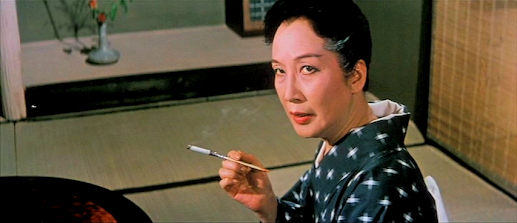 Chikako Hosokawa
Chikako Hosokawa1953. Akemi has helpedShino build up a successful dance school with over 50 students. However, aftershe encourages her mentor to star in a new show, Shino is mocked by the pressfor being too old. To add insult to injury, Akemi seduces Inokura and Shinodiscovers them in flagrante. As a result, Akemi is expelled, but – with thesupport of Inokura – goes on to start her own dance school, which is soon agreat success. However, her most promising pupil, Hisako (Ayako Wakao), turnsout to be just as scheming and two-faced as Akemi and it looks like a case ofwhat goes around comes around…
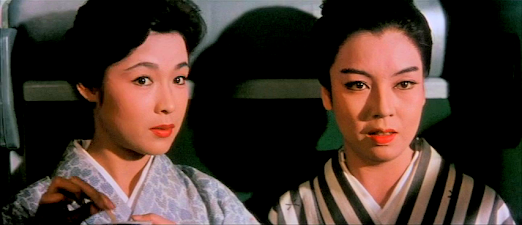 Ayako Wakao and Machiko Kyo
Ayako Wakao and Machiko KyoThis Daiei productionmakes a great star vehicle for Machiko Kyo, although there’s surprisinglylittle dancing considering that Kyo was herself a trained dancer. In any case,she gives a rich and varied performance as a character who turns out to be lessone-dimensional than she first appears. The first indication that there’s moreto Akemi than meets the eye is during a memorable scene (perhaps the film’sbest) in which she has a moving moonlit encounter with an elderly female shamisen player reduced to buskingdoor-to-door (played by Hisako Takihana, a former star of the silent screen and wife of film director Tomotaka Tasaka). The old lady sings the song which gives the film its Japanesetitle and, for Akemi, she’s something of a Ghost of Christmas Future.
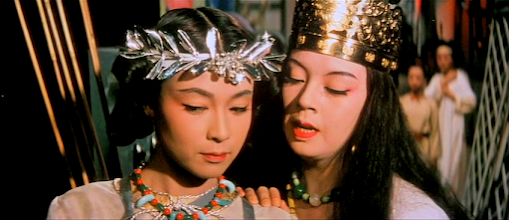 Wakao and Kyo
Wakao and KyoThe film is a littleless rewarding for Ayako Wakao fans as, while her role is an important one, shehas considerably less screen time than Kyo as well as a less multifacetedcharacter to portray. Having said that, she certainly has her moments here and,if you’ve ever wanted to see a catfight between Machiko Kyo and Ayako Wakao(albeit a rather one-sided one), this is the film for you. For their part, themen are pretty forgettable, although Eiji Funakoshi’s role as an avant-gardecomposer who collaborates with Akemi’s dance troupe provides the film’scomposer, Sei Ikeno, with an excuse to conjure up some interesting sounds forthe soundtrack, including a musical saw.
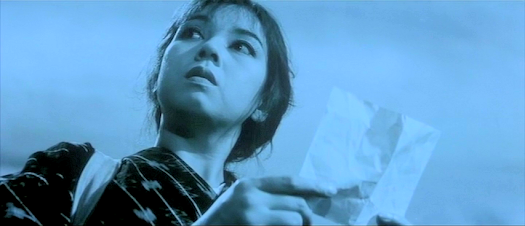
The first part of thefilm is in monochrome but, instead of black and white, a blue filter is used (the same effect which reappears in the later moonlight scene), which just seems odd. My guess is that this was done because the fact that the film was in colour was an important selling point in Japan in 1958, where colour films were not yet as common as in Hollywood. In fact, the film's posters state 'All natural colour' quite prominently. Perhaps the studio felt that, had they used standard black and white for the sequences set in the 1940s, some patrons might assume that the whole film would be like that, or at least feel cheated that part of it was. Another peculiarity of the film is a long split-screen montage ofAkemi and her pupils travelling all over rural Japan to give dance performancesoutdoors. Otherwise, it’s a fairly typical Daiei production, although a littlelonger than most at two hours. It’s the sort of story one might have expectedto come from the pen of Toyoko Yamasaki, but in fact Kaneto Shindo’s screenplaywas an original work. The director is Kozaburo Yoshimura, who frequentlycollaborated with Shindo, and had a reputation for bringing out the best infemale stars such as Machiko Kyo – a reputation which this film certainlysupports. Even though it lapses into full-on melodrama at the end, Kyo’s performancealone is enough to make this one worth watching.
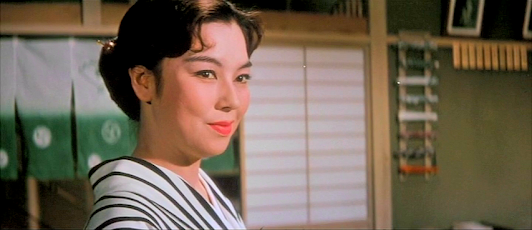
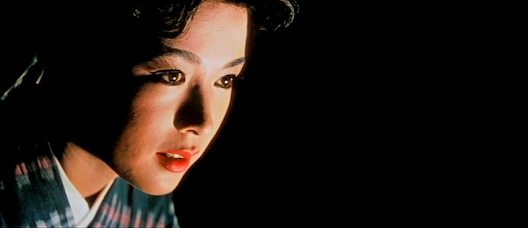
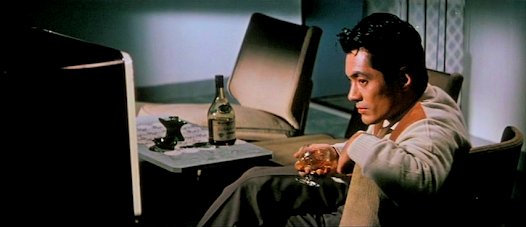 Jun Negami
Jun Negami